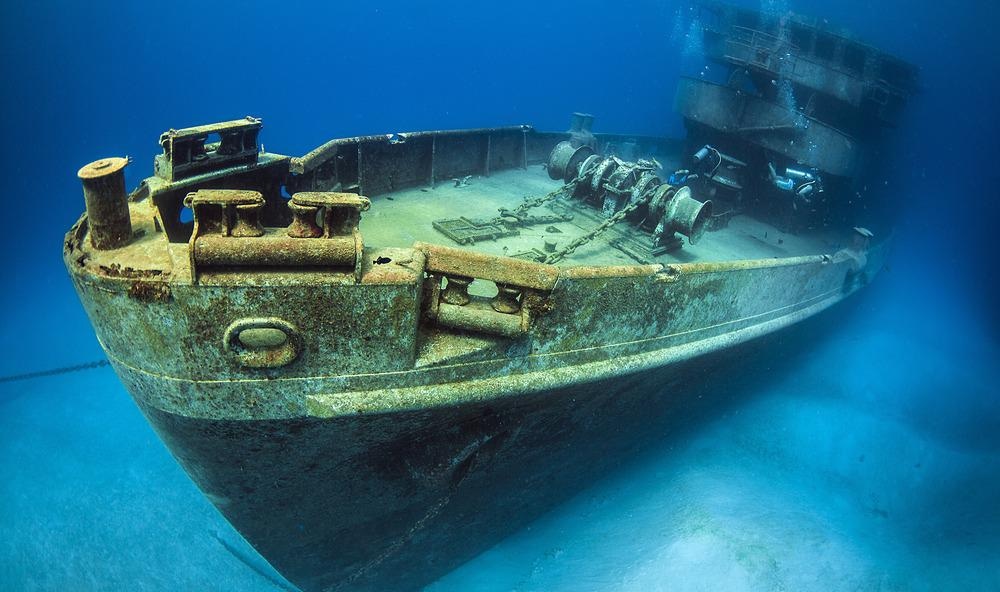The underwater world can be a dark place. Natural light only penetrates so far through water, so light levels rapidly decrease the deeper you look. Water can be clouded with sediment, particles, or even biological lifeforms, making them hard to peer through. The refractive index of water also poses challenges for imaging objects accurately and needs to be corrected to produce reliable images.

Image Credit: martin_hristov/Shutterstock.com
Even waters that are murky for entirely benign and natural reasons are dangerous places. Typically, this means that any investigation that needs to be performed in water of this type should be performed with unmanned vehicles and devices. However, this means using cameras that can take clear and valuable images in low-light conditions contaminated with many kinds of debris.
One of the common approaches to recording image information underwater is to make use of the difference in polarization between directly imaged and scattered light to suppress some background scatter from the image of interest.1 However, this approach often requires a good knowledge of the expected scattering level and a reference background region to be captured as part of the image. Capture and subtraction of a background in a dynamic and changing environment can be challenging.
However, recent developments in the methodology of underwater image recovery have made it possible to capture clear images underwater with good contrast and no prior estimation of the variables involved in any underwater scattering processes. The model is adaptable to uneven illumination conditions and a promising way to recover even detailed image information from challenging environments.2
Underwater Imaging Applications
Huge swathes of our international infrastructure lie underwater. From the intercontinental fiber optic cables that transmit data worldwide to gas pipelines, we rely on underwater transmission. As well as the vast scales of this infrastructure that may stretch for hundreds of kilometers, many sections are in regions that are difficult or dangerous to access for humans.
The underwater danger may come from poor water visibility, making diving and navigation challenging, or simply that many of these regions are so remote that any minor accident may result in more significant consequences.
Unmanned vehicle systems fitted with imaging cameras have become a popular way of performing pipeline and infrastructure inspections.3 Given the importance of many underwater pipelines and cables, inspections need to be performed regularly and with a reasonable degree of rigor. Finding ways to maximize the amount of automation on the image processing also means that any potential faults can be identified on the fly, rather than requiring extensive offline analysis.
Microsoft’s Underwater Data Center
Internet cables may not be the only source of data underwater. Microsoft has recently completed a trial of an underwater data center to see whether this could be a reliable and energy-efficient way of housing data farms.4
The somewhat surprising result of this trial was that Microsoft found its servers were less prone to failure than they would have been online, and the water provides natural cooling. Being underwater also means the data center can be placed near existing fiber optic cabling rather than requiring further extensions to connect it on land.
Forensics and the Future of Underwater Imaging
Another aspect where improved underwater imaging may help, particularly in challenging waters, is forensics. Automated vehicles with onboard cameras map the topography of rivers, ponds, and lakes.5 With sufficient quality images, this data could be used to perform active searches in the water or help understand and reconstruct events before an accident.
As automated vehicles can be prepared and set up in advance, one advantage of using imaging cameras and automated vehicles is that they can be quicker to deploy than human divers.
Mapping underwater terrain can also be of interest for local geographers and monitoring processes such as seabed erosion. Still, one real advantage of having very clear, high resolution underwater is finding even small objects. Archaeological artifacts, particularly as part of shipwrecks, could be discovered with these new high-contrast technologies.
Imaging Improvements
The research team realized that one of the issues with using background regions to estimate the difference in the real transmitted versus scattered light in an image was that the variables used to describe these would often vary spatially, even in a small area. This meant that performing a meaningful background subtraction was very difficult and would often introduce additional noise into the image and need to be manually selected.
Instead, the team varied the regions over which they performed the image recovery and expanded them significantly, avoiding areas that seemed to have no light at all. This meant they could complete the analysis in an automated way without introducing additional noise. The method worked even for highly turbulent water and samples with a large scatter that they simulated using milk.
Better ways to see underwater, no matter the conditions, will help us explore one of the least understood regions of our world.
References and Further Reading
- Guan, J. G., Zhu, J. P., & Tian, H. (2015). Polarimetric Laser Range-Gated Underwater Imaging. Chinese Physics Letters, 32(7). https://doi.org/10.1088/0256-307X/32/7/074201
- Wang, H., Hu, H., Jiang, J., Li, X., Zhang, W., Cheng, Z., & Liu, T. (2021). Automatic underwater polarization imaging without background region or any prior. Optics Express, 29(20), 31283. https://doi.org/10.1364/oe.434398
- Bonin, F., Burguera, A., & Oliver, G. (2011). Imaging systems for advanced underwater vehicles. Journal of Maritime Research, 8(1), 65–86.
- Microsoft (2020) Underwater Data Centers, https://news.microsoft.com/innovation-stories/project-natick-underwater-datacenter/, accessed October 2021
- Rzhanov, Y. and Gu, F. "Enhancement of Underwater Videomosaics for Post-processing," OCEANS 2007, 2007, 1-6, http://dx.doi.org/10.1109/OCEANS.2007.4449276
Disclaimer: The views expressed here are those of the author expressed in their private capacity and do not necessarily represent the views of AZoM.com Limited T/A AZoNetwork the owner and operator of this website. This disclaimer forms part of the Terms and conditions of use of this website.